22 Dutch Foods You Must Try In The Netherlands
I’ve always been obsessed with Dutch things. Dutch art, Dutch history, Dutch architecture. That’s precisely why I did a Master’s degree in Dutch Studies.
However, one thing that most people aren’t obsessed with is Dutch food. Dutch cuisine being simple and rustic, it may not be as popular as other European foods. But after spending a few years living in the Netherlands, I can assure you that there are Dutch foods that are absolutely delicious.
Many region-specific foods are a must-try on your visit! Let’s look at the best of them, from sweet to savory!
Dutch Sweets
1. Stroopwafels
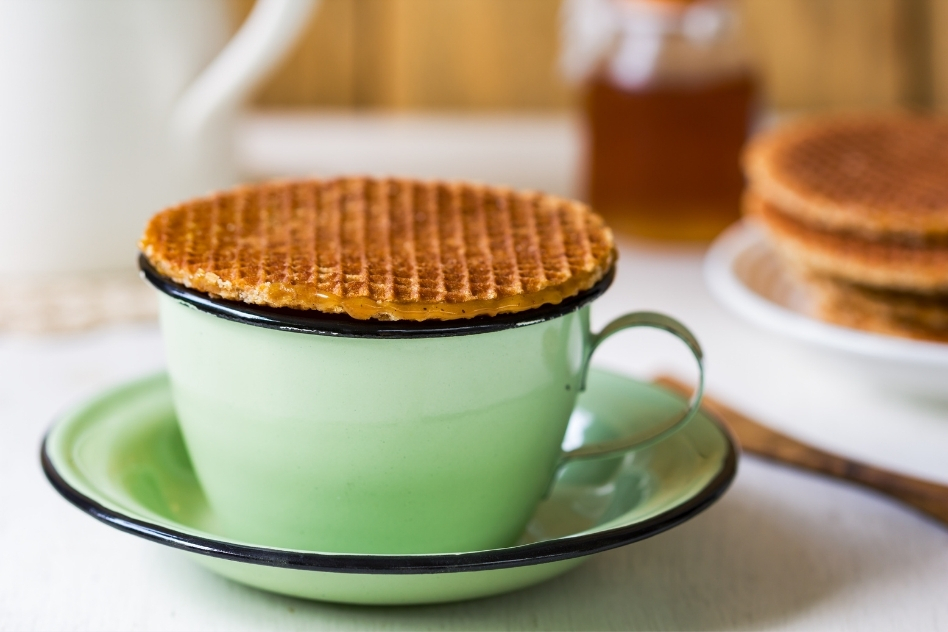
Stroopwafels don’t need too much of an introduction. First made in Gouda in the 18th century, stroopwafels came into existence when bakers added sweet caramel syrup to leftover cookies to reuse them.
These waffles became popular, and the procedure to make them soon involved pressing the batter in hot iron, then removing the edges so that it could separate into two discs, that are then filled with a cinnamon caramel syrup or ‘stroop’.
These stroopwafels became popular all over the world thanks to Dutchies. You can eat them warm to feel the melting caramel or put them on top of your coffee or tea so it slowly melts. You can buy stroopwafels in almost every market, but the best ones are made fresh at the street stalls in Holland, and should be enjoyed right there warm!
2. Drops (Licorice)

Personally, I’m not a big fan of Drops, but other people love them. These licorice-flavored candies come in different shapes and are the most popular Dutch snacks.
They also consume about 32 million kilos per year, with each person eating at least 2 kg per year. No wonder they’re also the largest producer of drops in the EU.
Some drops are soft and sweet, while others are hard and salty, they’re often referred to as Zoute Drop (salted licorice) or Doubbel Zoute Drop (double salted licorice). Be careful, your Dutch friends might force you to eat some!
If you’re into licorice, consider trying Dropshot, a Dutch liquor made with salted licorice!
3. Oliebollen
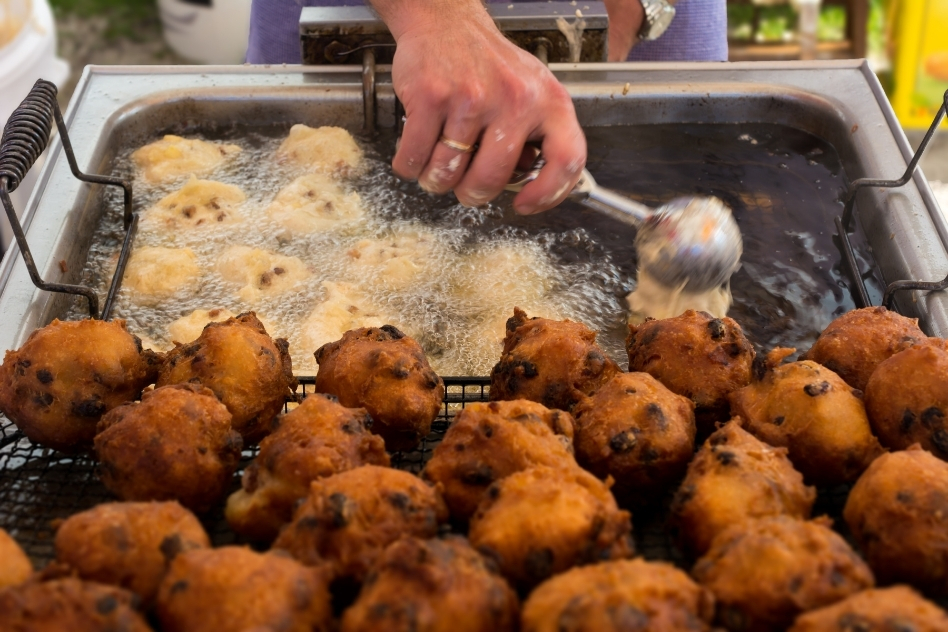
Once called oliekoek, the traditional olieballen has been depicted in paintings dated as far back as 1652. Literally translating to ‘oil balls’, that’s basically what they are!
Also called smoutballen in the Netherlands, they’re eaten during funfairs or Christmas seasons.
Once made by scooping the balls of dough into hot lard, they’re now deep-fried in oil instead. The fried dough balls are often served covered with powdered sugar, similar to donuts. Some versions also contain currants, raisins, candied fruit, zest, or pieces of apple.
4. Speculoos

Speculoos or Speculaas is a spiced biscuit that’s traditionally baked around 5th December which is St Nicholas Day in the Netherlands. The shortbread-type biscuits often have the image of a ship, elephant, farmhouse, horse or other elements from St. Nicholas story on them.
The biscuit may have gotten its name from the Latin word speculator or “he who sees everything” which was St Nicholas epithet. Or it could have come from the Dutch word ‘specerij’ which means spice.
The thin, crunchy biscuits are made with hints of cardamom, nutmeg, cinnamon, cloves, or ginger. Dutch people love Speculoos and have even created variations of the cookies – some with anise or almond flour.
But the best part about Speculoos is that you can eat it as a bread spread. Popularly called Speculoos, Speculla or Biskoff Spread, this version of the cookie butter is made with 60% crushed Speculoos cookies. It has a caramelized ginger taste as popularized by Els Scheppers in the popular Belgian TV show “De Bedenkers” (The Inventors).
I wasn’t convinced at first, but the spread is fantastic.
5. Hagelslag (Sprinkles)
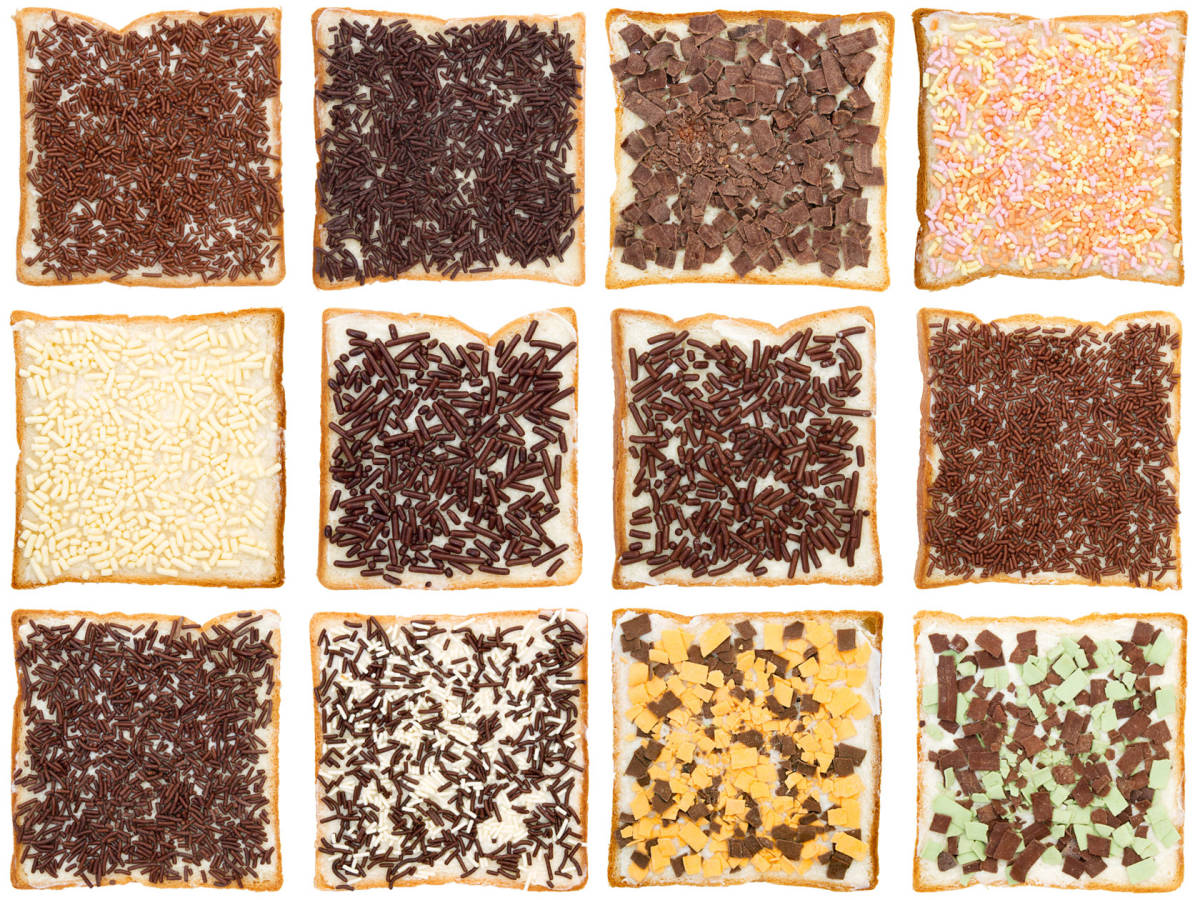
Anyone who’s visited Holland knows that hagelslag – chocolate sprinkles, are the most important part of Dutch breakfast or lunch as eaten on bread. It may sound weird, but it’s actually tasty.
Dutchies also use hagelslag for baby showers – by eating blue or pink sprinkles for the gender reveal.
Although decorative confectionary was in use for cakes since the 18th century, the Dutch version, Hagelslag was first invented in 1936 by the Venz company in response to letters from a five-year-old boy, H. Bakker, asking for a chocolate bread topping. It’s possible that the chocolate sprinkles were just for himself.
6. Pepernoten
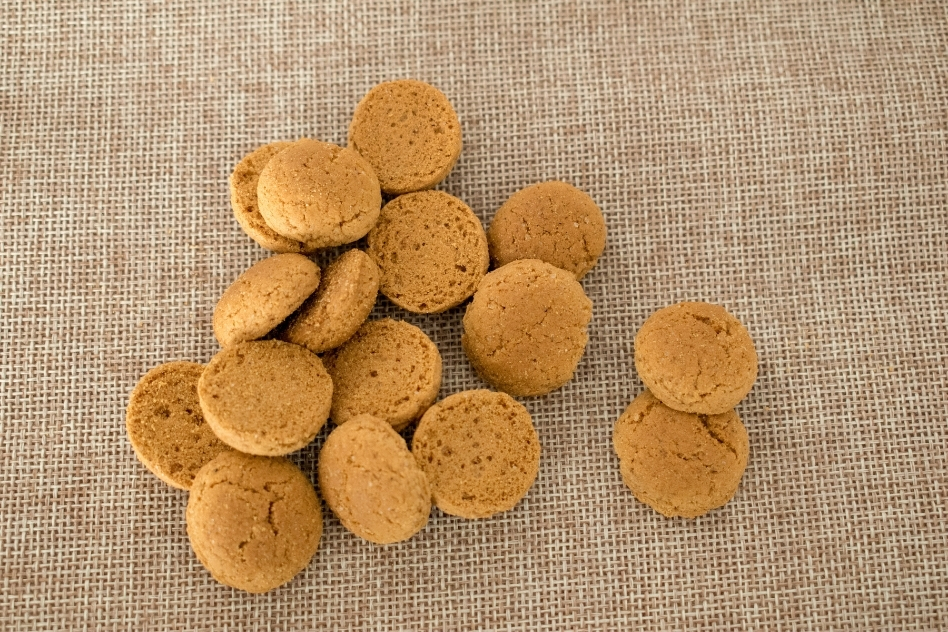
Literally translating to ‘pepper nuts’, these spicy small biscuits originated in the 16th century when spices became more affordable in Europe as a result of trade with the Far East. The cookies made of rye flour, anise, and sugar with cinnamon or cloves; soon came to be associated with Sinterklaas day on the 5th of December.
According to the tradition Saint Nikolas comes from Spain by boat on Sinterklaas day. He would bring gifts for the children and put gold coins in the shoes of those who left them out for him. Saint Nick also threw gold coins in the windows of 3 young girls’ houses to provide them with a dowry.
Since then, to celebrate Sinterklaas Day, these irregularly shaped cookies were often thrown in handfuls in kids’ rooms so that they could look for them. What a weird tradition!
While the traditional pepernoten didn’t have any particular shape, the modern-day pepernoten are round and often confused with Kruidnoten, which are also made for Sinterklass day. These cookies have the shape of a half-sphere, are hard and crispy, and have a typical ‘speculoos’ flavor.
7. Poffertjes
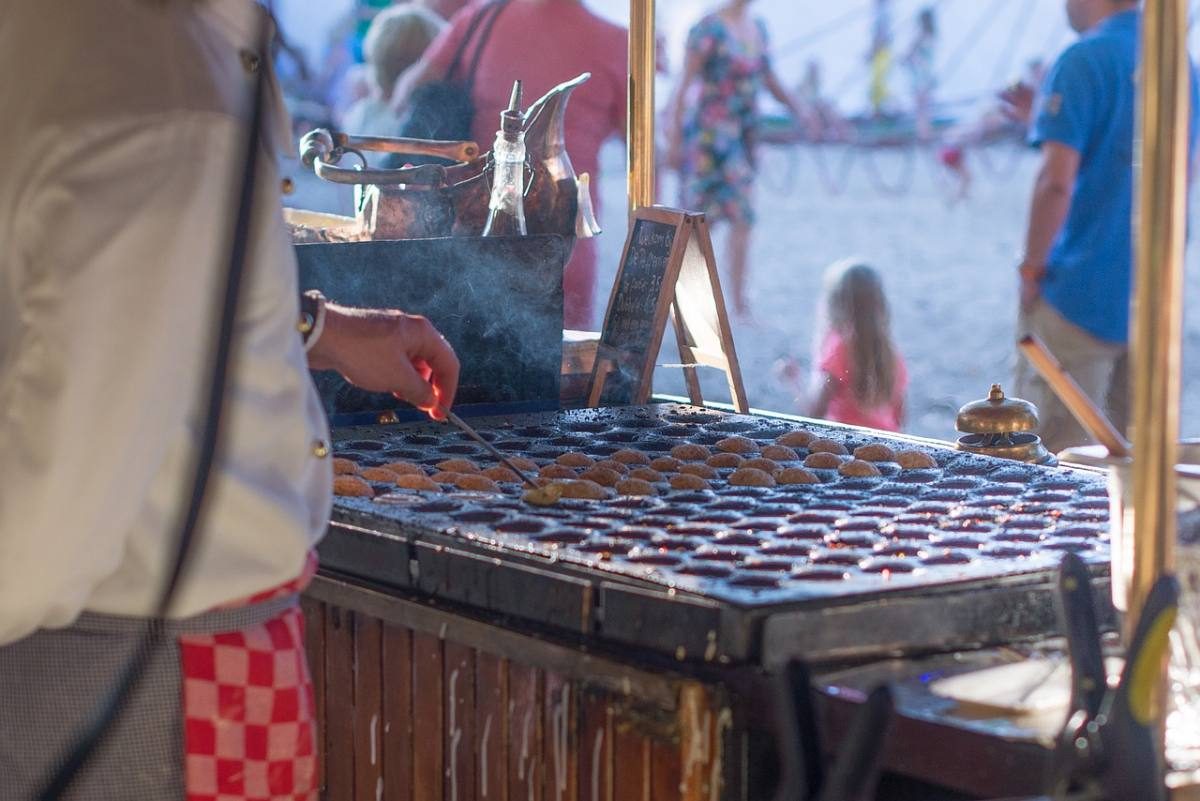
These cute little Dutch pancakes are served at Christmas events and in summer festivals, similar to olieballen.
Starting as a Catholic tradition, the ‘poffertjes’ are sometimes called ‘brothers’. Why? Because at one time in the Netherlands, the communion host was turning out very dry, and the brothers experimented with different recipes. Their experiments created the poffertjes as they’re known today.
These yeast-based fluffy pancakes are made in a special poffertjespan, and served with a crazy amount of butter and sugar. Sometimes, they’re also served with whipped cream or sweet syrup.
8. Ontbijtkoek
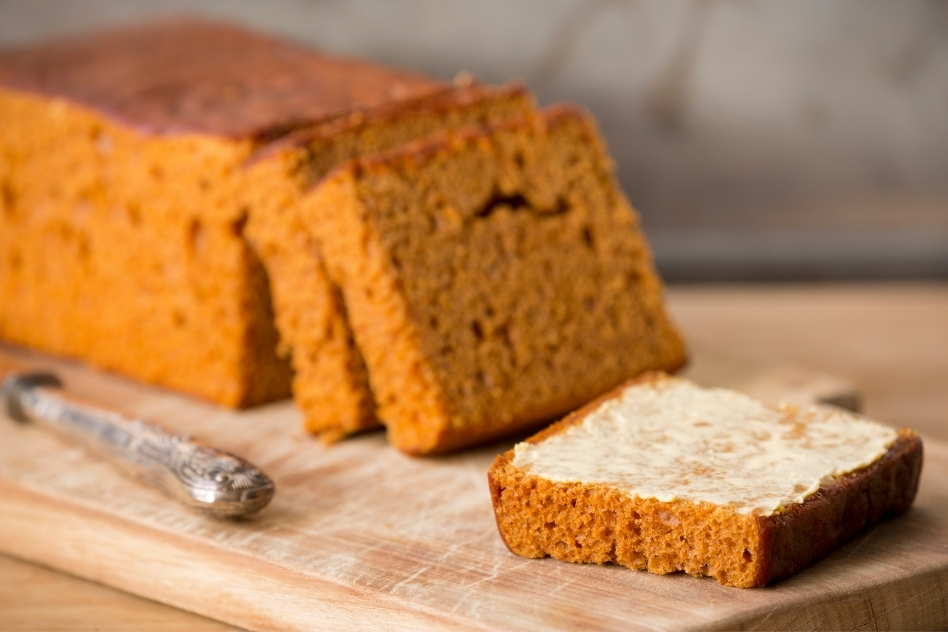
The Ontbijtkoek is a delicious ginger-spiced cake made with rye flour. Spices used include ginger, cloves, cinnamon, and nutmeg. Sometimes a candied citrus peel called succade is also added.
The recipe varies in different parts of the Netherlands. Literally translating to ‘breakfast cake’, Ontbijtkoek with a thick layer of butter on it is a must-have for breakfast or as a snack.
Is ontbijtkoek really a Dutch cake? It depends. The ancient Egyptians, Greeks and Romans had a breakfast cake that contained pepper. In the Middle ages, the cake was made using leftover bread and different spices. In the 16th century, the cake had begun to be produced by many bakeries all over the Netherlands using ginger and other spices.
Ontbijtkoek’s is sometimes also called peperkoek (pepper cake) or kruidkoek (spicy cake).
9. Tompouce
Made of two puff pastries that are filled with custard cream, the tompouce pastry looks a lot like the French millefeuille.
The Tompouce, or tompus, was created by a pastry chef in Amsterdam. He was inspired by General Tom Thumb, a 1-meter-tall dwarf called Charles Sherwood Stratton who performed in PT Barnum’s circus as Napolean (the guy from the Greatest Showman). A Frisian dwarf who copied him used the French name, Admiral Tom Pouce. At some point, the name was given to the pastry too.
On King’s Day the icing often turns orange to celebrate the Dutch Royal Family.
10. Vla
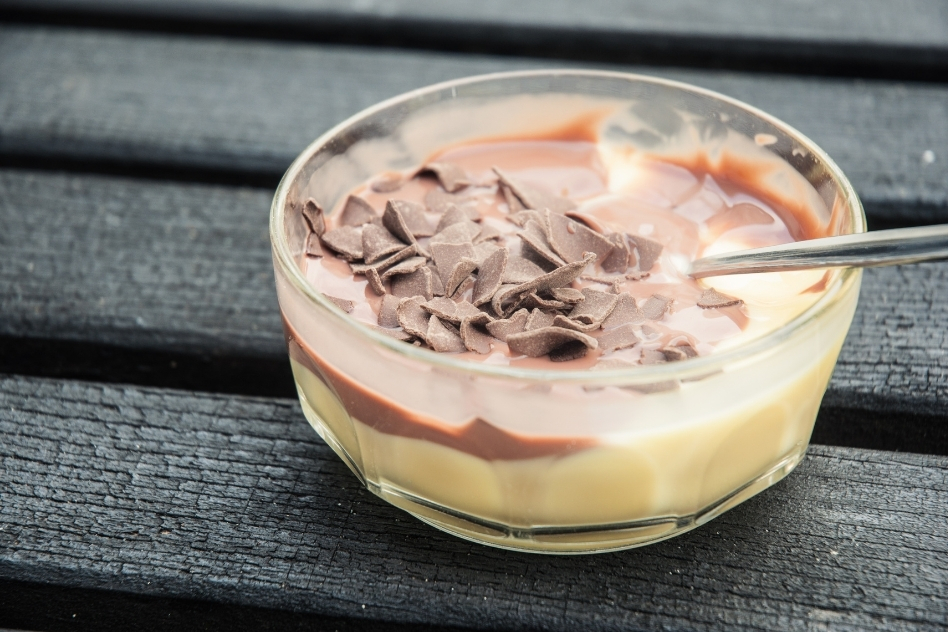
Vla is a thick custard-like drink made of milk, eggs, vanilla, and sugar. It originated in the 13th century and was often used to cover pastries or cakes. In the 1950s it became popular as a sweet alternative to porridge.
Because it was originally sold in bottles, a special tool called a flessenschraper or bottle scraper was invented to help individuals scrape all the contents out of the bottles. You’ll now find vla sold in cartons everywhere, with flavors such as vanilla, caramel, chocolate, banana, apple, and orange.
11. Paasbrood and Kerststol
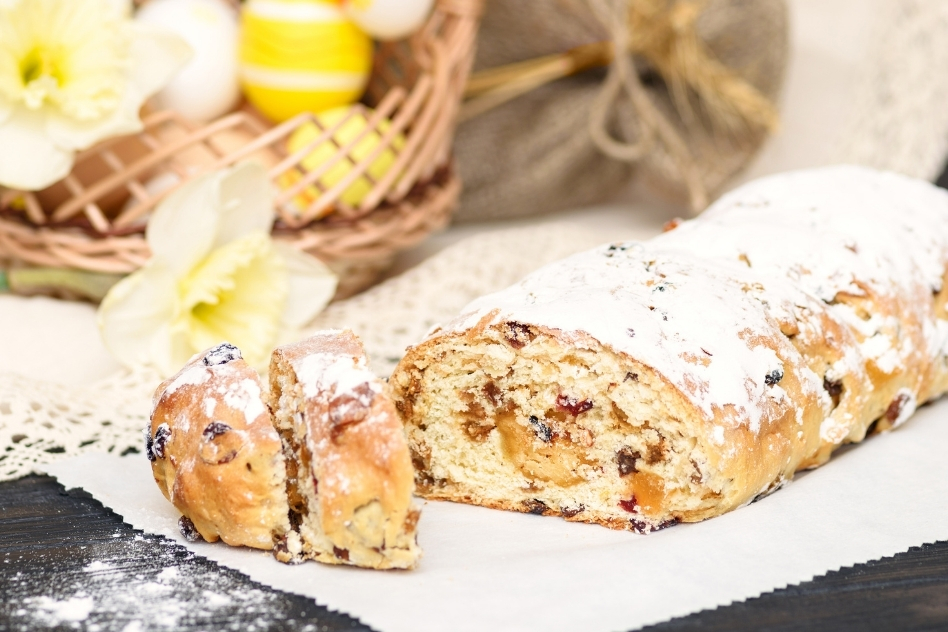
These popular oval-shaped candied breads originated when the Crusaders brought back almonds and spices from the East. The first known written record of the bread was the German stollen in the 14th century, which is quite similar in ingredients.
Made with yeast, raisins, dry fruits, candied peel, butter, vanilla, cinnamon, and sugar they have an almond paste in the center. Some versions also include kiwi, cardamom, crystallized ginger, dried cherries, dried cranberries, ginger, walnuts, or almonds.
The dough is filled with amandelspijs – an almond paste log in the center before baking. When ready, it’s dusted with icing sugar before serving.
When served for Easter as an end to the fasting season, it’s called paasbrood or paasstol. When served for Christmas, the bread is said to symbolize the Christ child, and it’s called Kerststol.
Savory Food in the Netherlands
1. Kaas (Dutch Cheese)
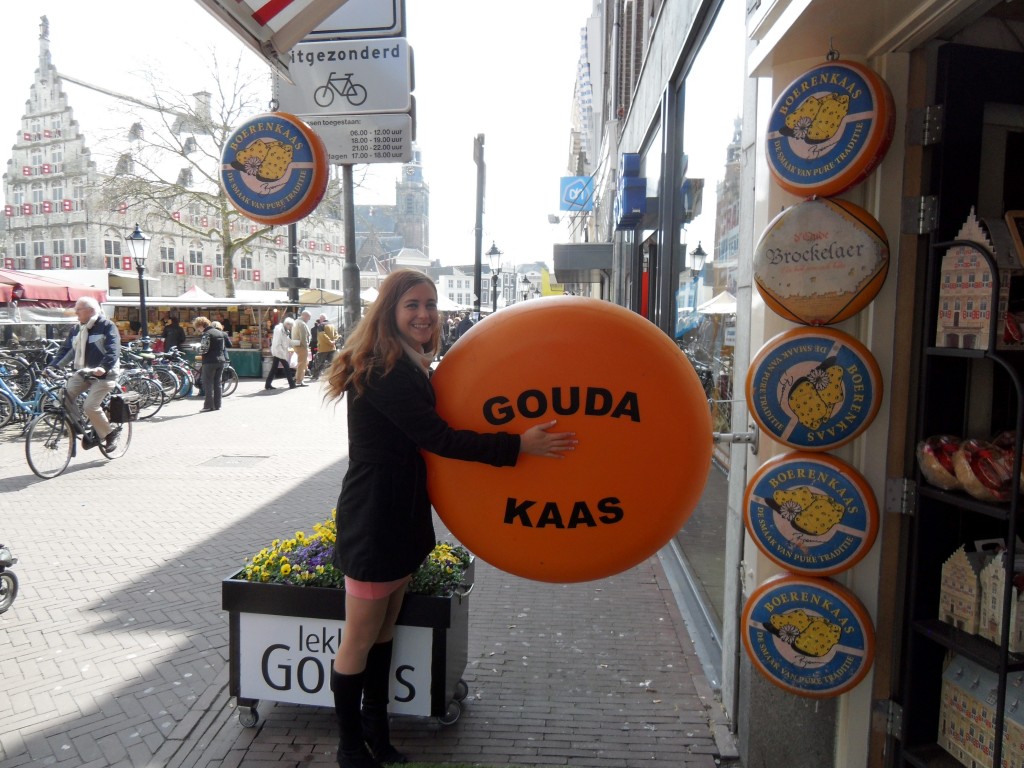
Somehow some wheels are even bigger than my whole body…
You’ll struggle not to try cheese in the Netherlands – it’s everywhere! Maasdam, Leerdammer, Edam Holland, Boerenkaas, there are so many.
Hollandse geitenkaas is soft milk made from Dutch goat milk. But don’t forget to try some Gouda jong belegen met komijn (young Gouda cheese with cumin) or pesto Gouda!
2. Bitterballen

In 18th-century Amsterdam, a pub owner named Jan Barentz was looking for some finger food to feed his clients who were often hungry while drinking. His wife crumbled leftover croquets, rolled them with eggs and breadcrumbs, and deep-fried them in hot oil. And they soon became famous!
Bitterballen is a classic food that you’ll find at most bars around the Netherlands. They’re usually ordered or served as snacks accompanied with drinks, and there’s nothing bitter about them!
Those small, fried, bread-crumbed balls contain a mixture of veal and beef ragout to go with mustard. They’re usually VERY hot inside, so wait a bit after you get them and never put a whole ball in your mouth straight away, otherwise, you’ll burn your tongue.
3. Krokets (Croquettes) & Kaasbroodjes
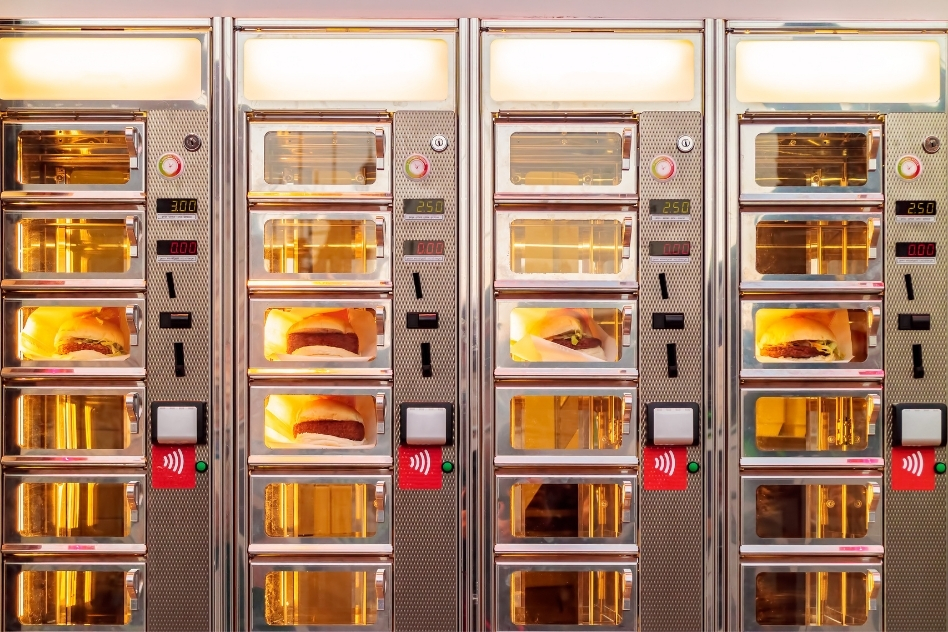
Friends of bitterballen, krokets or croquettes are made of meat ragout that’s rolled in breadcrumbs and deep-fried. Their history dates back to the time of Louis XIV, who loved Kroketten.
The first recorded recipe for a croquette was from Louis XIV’s chef. They can be found in cafes, snack bars, or at self-serve dispensers at the Febo chain stores. Even McDonald’s has their own version of McKroket.
Croquettes are usually filled with veal or beef, but if you fancy something meat-free, try kaasbrodjes. Kaasbrodjes are simply French pastries filled with cheese that have been deep-fried. They’ve become popular as Gouda cheese pastries in other countries.
4. Pannenkoeken or Dutch Pancakes
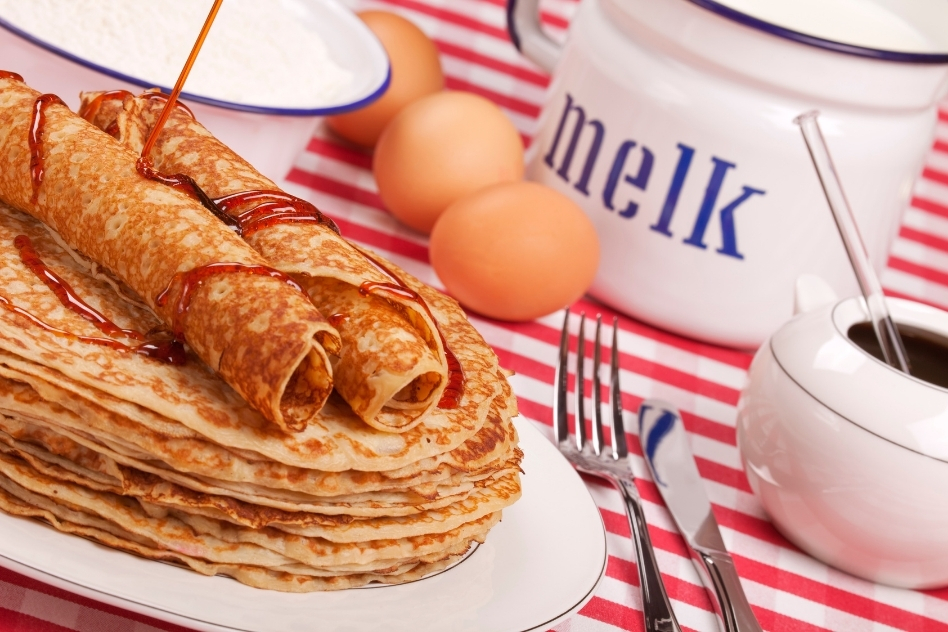
Pancakes are well known all over the world, but Dutch pancakes or pannenkoeken are a bit different. They’re a mixture of thin French crepes and thick American pancakes, and traditionally also included buckwheat. Often served in pannenkoekenhuizen or pancake houses, they’re also really wide and can go all the way up to a foot in diameter.
The filling sitting on top of it is usually made from raisins, apples, bacon, or cheese. They’re sometimes served with just cream, plain syrup, or with powdered sugar.
A popular way for tourists to have them is while sailing on ‘De Pannenkoekenboot’ boat tours from Amsterdam or Rotterdam, that offer unlimited all-you-can-eat pancakes on every cruise.
Alternatively, especially if you’re visiting the Netherlands with kids, head to Hans & Grietje pancake house for an unforgettable time.
5. Stampot

Stampot which means mash pot is a mixture of mashed potatoes with other veggies – onion, cabbage, lettuce, carrot, turnip greens, kale, or sauerkraut – and a smoked sausage called rookworst. My personal preference is stampot made of potatoes, spinach, onion, mushrooms and bacon.
The version of stampot with mashed potatoes, carrots, and onions is called hutspot.
It must be served with a gravy called jus and you’re supposed to make a small hole in the mash and fill it with the sauce, known in Dutch as a kuiltje jus (little gravy pit).
6. Joppiesaus or joppiesauce
Dutch people love fries, and fries need a sauce. That’s where joppiesaus comes along. It’s a mixture of onions and a mild curry powder with mayo. It’s very unhealthy, like most of the Dutch specialties, but it tastes good.
The bright yellow sauce Joppiesaus was invented by Janyne “Joppie” de Jager circa 2000 when Janyne worked at Annie’s Snackbar in Glanerbrug. Elite Salades & Snacks bought the recipe and entered production in 2002. You’ll find it served with fast food dishes across the Netherlands!
7. Kibbeling and Lekkerbekje
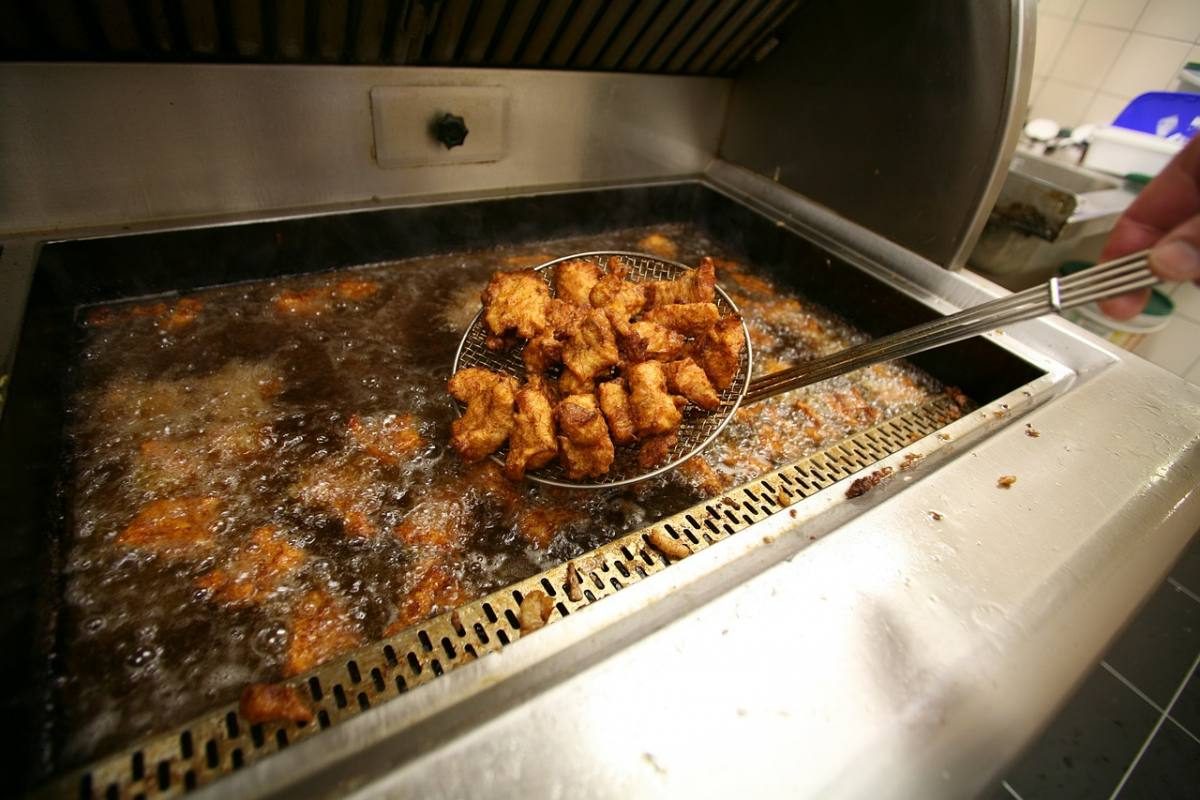
Kibbeling is the most popular market snack in the Netherlands. It’s a fried battered fish (usually cod or ray-finned whiting) with tartar sauce.
The word kibbeling usually referred to the cheeks of the cod which were an important part of the Dutch diet in the 19th century. Before that, circa the early 1800s, it referred to the waste parts of a fish including the head that was usually given to the poor, but come 1849, it referred to only the cheeks of the cod. In the 1950s, a fishmonger from IJmuiden got the brilliant idea of breading the cod cheeks and selling them as a snack to tourists. And it soon rose to popularity.
Lekkerbekje is a form of kibbeling that hasn’t been chopped into bits. It’s usually served with patatje oorlog, which is thickly fried fries with mayo.
While I like kibbeling, I prefer fried mussels, served in the same stalls as the kibbeling. I never considered eating fried mussels before, especially not battered, but they’re super tasty.
8. Hollandse Nieuwe or Haring (Herring)
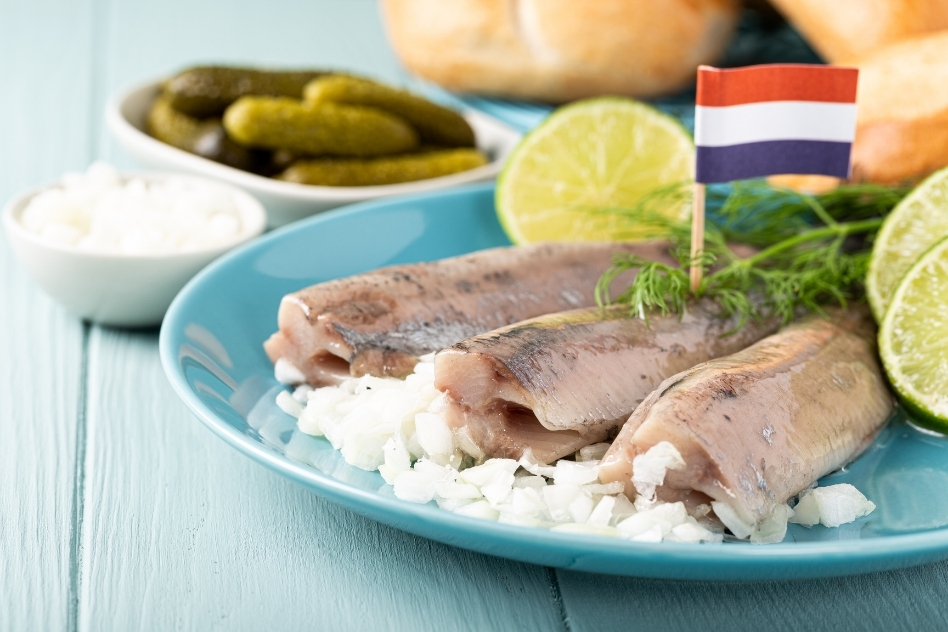
Almost a symbol of Holland by itself, the raw herring is a very popular dish. Don’t be afraid that it’s raw, because it’s really good and covered with chopped onions. The herring has been gutted and salted to preserve it, so technically it’s not purely raw..
You can also try a broodje haring which is a herring sandwich or eat the deboned fish on its own with pickles. You’ll find herring sold at carts called haringhandels everywhere. Traditionally, the best time to enjoy the herring is between May and July when it’s really sweet.
To eat it traditionally: grab the fish by the tail, hold it in the air, tip your head back, and bite upwards! Be careful, because sneaky seagulls might rip it off your hands!
9. Erwtensoep or Snert

Almost every country on the planet has some version of pea soup. The Dutch version was added to the list of Dutch intangible cultural heritages in 2019!
Traditionally eaten in winter, the Snert or Erwtensoep is a thick pea soup made with split peas. The Erwtensoep is usually made with celeriac, leeks, onions, carrots, potato and pork meat. Just before the soup is served, thin slices of a smoked sausage called rookworst is added to it. Bacon, butter, cheese, or roggerbrood (rye bread) is served alongside.
This thick soup is so popular that there’s a Snert World Championship held in Groningen every year since 1995! In winter, you’ll find snert or Erwtensoep sold at any of the koek-en-zopie stalls around the Netherlands.
10. Frikandel
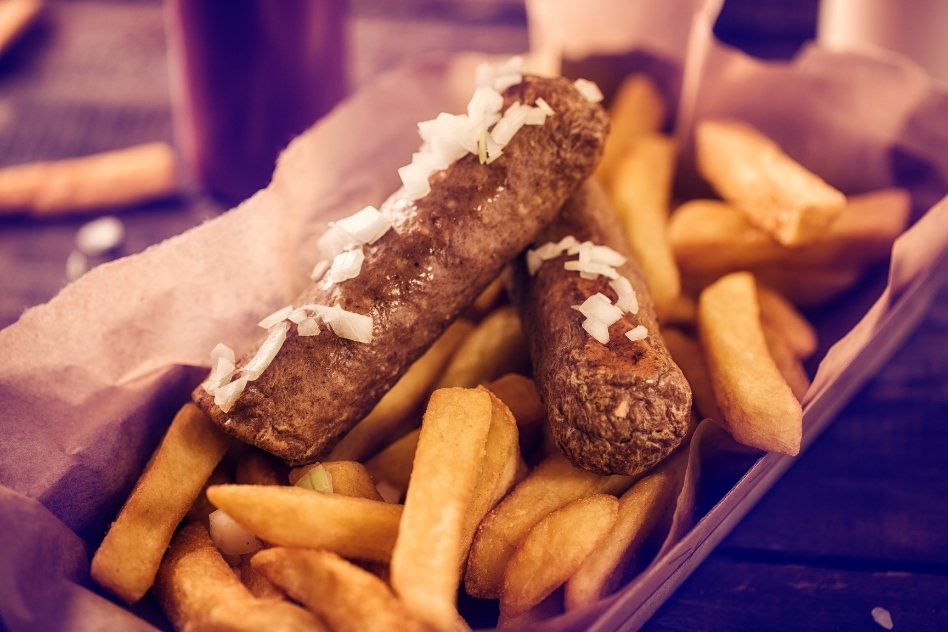
These long, deep-fried and skinless hot dog styled sausages are a traditional snack in the Netherlands. Made of ground chicken, beef, or pork meat mixed with nutmeg, mace, pepper, or mace, the sausages were once called frikadel. Making allusions to its phallic shape, the Dutch playwright PC Hooft called it a recipe for old spinsters.
The sausage is often served in long buns or broodje, or with fries, raw onions, lettuce, mayo, and Currygewürzketchup. When served with mayo, curry ketchup, and diced onions, it’s called a frikandel speciaal.
11. Hachee
This traditional Dutch dish is a stew of fish, meat, poultry, or veggies. The dish was probably created when meat was cooked in large iron cauldrons and then cooked with vinegar or wine to tenderize the meat. Laurel leaves, cloves, apple butter, and breakfast bread are added, and the dish is served with rice or potatoes.
Derived from the French word hacher, which means to grind or chop, the origins are unknown. It may have originated in the Medieval times at around the same time as the hutspot, and is often eaten with it.
November 15 is celebrated as National Hachee Day.
How many of these Dutch foods have you tried? Which are your favorite?





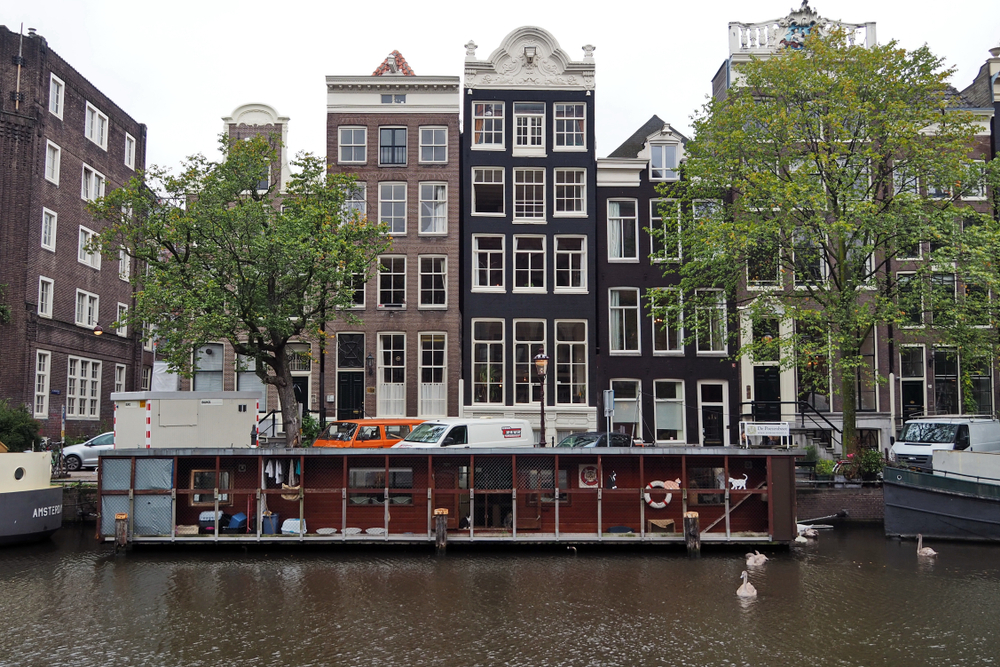
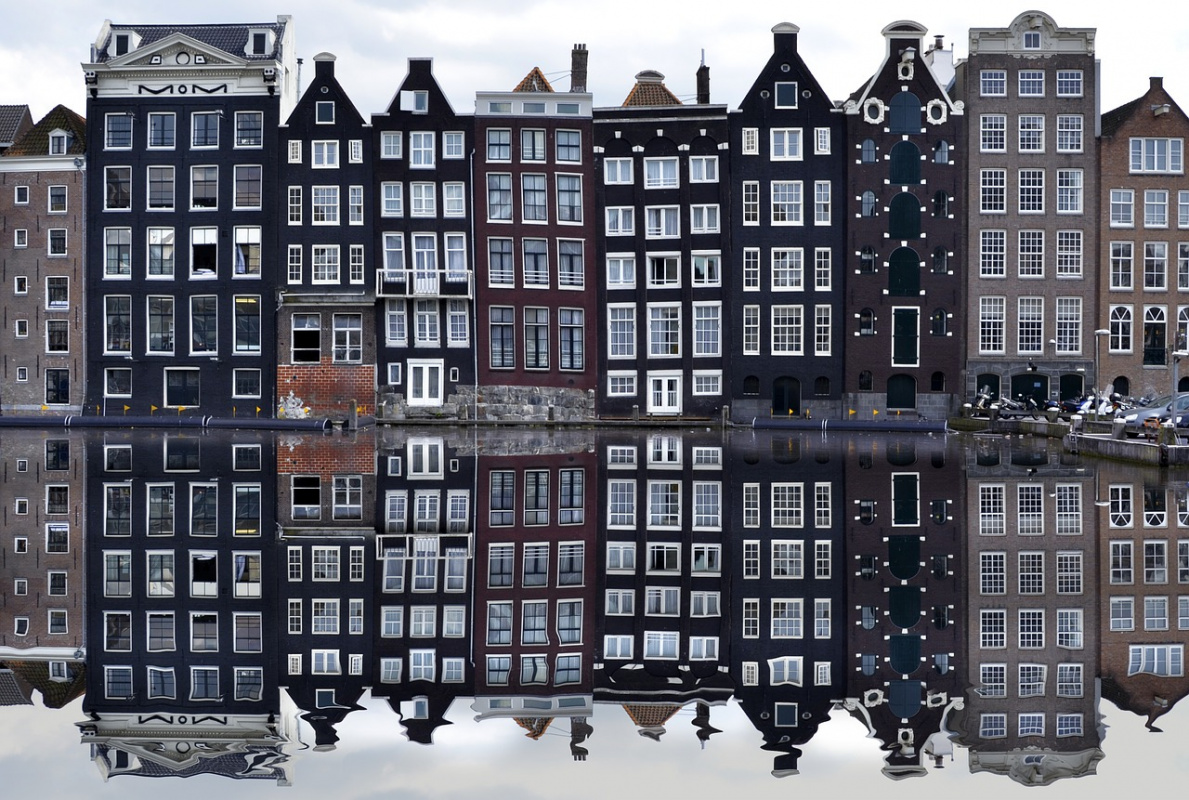
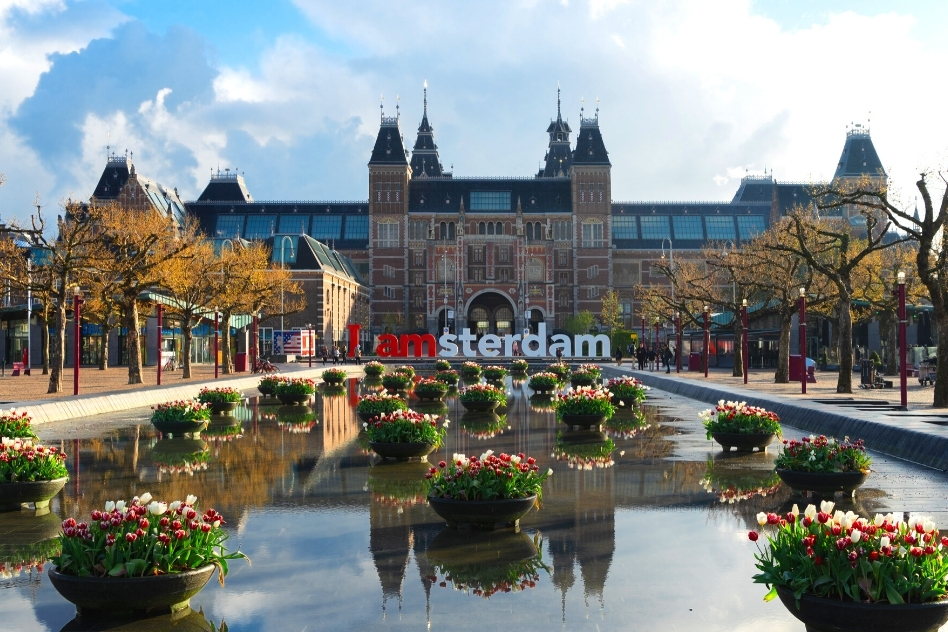

I’ve tried this Speculoos cream which consistency reminds me of peanut butter, but it tastes like Polish “herbatniki”, so creamy and yummy!
Have you tried the crunchy one yet? yum… it’d sound weird but I enjoy the spread the most on Polish chocolate covered herbatniki actually.
I simply could not depart your website before suggesting that I really enjoyed the usual information a person provide in your guests? Is gonna be again frequently to check out new posts
I want to try these balls, they look tasty! Chocolate sprinkles on bread are still a nono for me.
I love these balls! 😀
Hey There. I found your blog using msn. This is an extremely well written article.
I’ll make sure too bookmark it and return to read more of your useful info.
Thanks for the post. I’ll deinitely return.
You should take part in a contest for one of the best sites on the web. I will recommend this website!
Thanks Tessa!
We tried most all of these on our recent visit to Amsterdam. Can’t say we were knocked out by any, but they are all good. Our favorite was Poffertjes, the fluffy little pancakes with powdered sugar and chocolate sauce.
Oh yeah, poffertjes are good too 🙂
Food sounds and looks interesting. I love waffles and cheese. Im sure that these tastes a lot better when eaten in Holland. This is a nice food advise.
Then you should definitely visit Vanessa 🙂
I think I have tried the first 10 specialties. Don’t remember having stampot or haring. I definitely had fries in Netherlands but were they coming with joppie? Honestly no idea. They may have. 🙂
If the sauce was yellowish then it was joppie 😀 But they also might have given you fries Dutch style – with a ton of mayo!
I haven’t heard of hagelslag but that’s my top choice from the list 😀 Is it possible to buy it somewhere in Poland?
Most likely it should be sold in Poland as chocolate sprinkles, but it’s gonna melt faster and loose its effect 😛 But maybe in a foreign section of the supermarket?
Joppiesauce sounds yummie! 🙂 With fries must be delicious 🙂 And so many sweets mmm 🙂
Let me know when you try it! 🙂
Dutch! I looove the Netherlands! Didn’t try most of those specialities, though. However, what about green peas soup? I haven’t try it but I’ve heard it in many guides about the Netherlands and thought it’s quite popular! Have you heard of it?
Oh yeah, but I actually hate peas so it’s not for me 😛
And cinnamon sticks (kaneelstokjes)! I fell in love with them even though I have never been to the Netherlands 🙂
I actually never tried them!
I love the pancakes so tasty
Hi Anna, so good to read you liked the Dutch treats. What you forgot to mention is the wide variety of dairy products in the supermarket. Ever tried the slagroom caramel vla, or herfstvla? Just delicious! There might be 100 varieties, if you count in the yogurts as well. I also traveled over 80 countries and never saw anything like that. At the moment in the US. Boring food wise…
I’m trying to find in the USA the little cracker balls the Dutch put in their soups. Anyone have any suggestions? I think the name translates to soup balls.
Lekker! My mother was from Groningen and came here after the war. I grew up on zoute hareng, dropped, and Hashe. Loved this!
Ever tried smoked mackerel on a sandwich with a little salt and pepper, preferably still warm from the smokery?
Yeah just never warm 🙂
Hi Anna,
Wonderful list of typical Dutch foods! However, the traditional pink or blue sprinkles eaten at baby showers are called “muisjes”. They are not hagelslag. And patatje oorlog is french fries with raw diced onions, mayonaise and peanut butter sauce.
It’s funny, even to somebody like me, born and raised in the Netherlands, but the traditional foods we have there are not healthy, we don’t flood the gyms the way Americans do, but our obesity and heart disease rate are lower.
I don’t get it.
I do. People in Holland bike everywhere! Americans don’t get that much exercise. My parents were born and raised in Rotterdam and we visited many times.